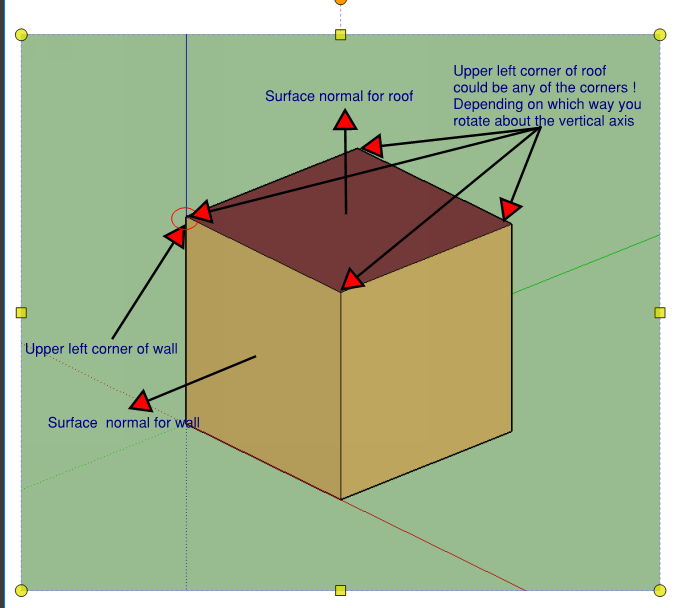How should I choose the starting vertex for horizontal surfaces?
In the GlobalGeometryRules object the field Starting Vertex Position defines the first vertex in the surface perimeter. The options are UpperLeftCorner, LowerLeftCorner, UpperRightCorner, or LowerRightCorner. This is simple enough for vertical surfaces where "Upper" and "Lower" refer to the z-axis, and "Left" and "Right" are as seen from outside the surface.
However, if the surface is horizontal then up, down, left and right are undefined.
So is there a suggested way to order the vertices of a horizontal surface? Does it matter what order they are in for horizontal surfaces?










Your question seems to confuse 'order' and 'Start point'. I think the sequence is important but the start point is arbitrary. You can define left and right for the horizontal surface. Either look from the zone in the direction of the surface normal, or at the surface, looking into the zone.
Order includes both start point and direction. The start point is not arbitrary, it's apparently needed for shading calculations and is how to choose it is defined in the global geometry rules. The problem is what is an "upper" corner in a horizontal surface?
can u adopt your own convention? Are you getting errors when running e+? Maybe you could say X axis is up/down, Y axis is left right...
Yes, I can adopt a convention, but I'd rather use an established one if one exists. No errors as yet, but then I'm not currently running any models, I'm working on automated geometry intersection and matching in Python and want to ensure any newly-created surfaces follow the global geometry rules.
I am using counter clockwise in the direction of surface. and it works fine. I was getting errors , but now it works for my E+.